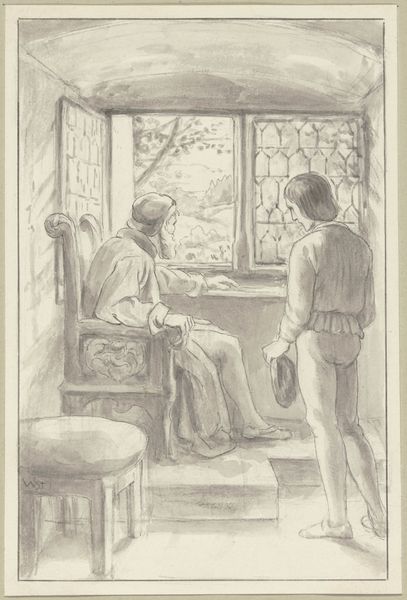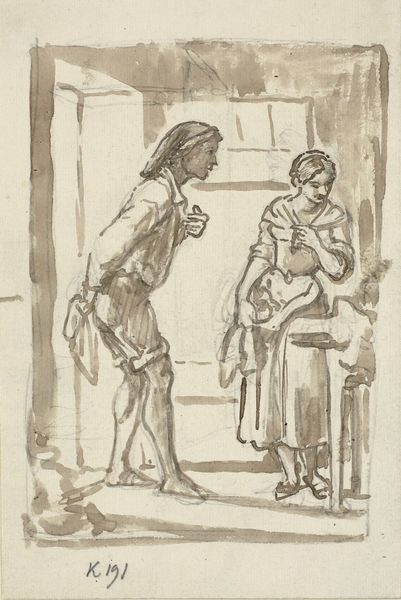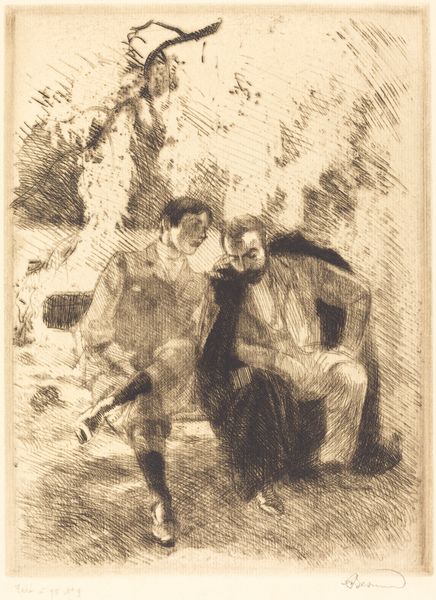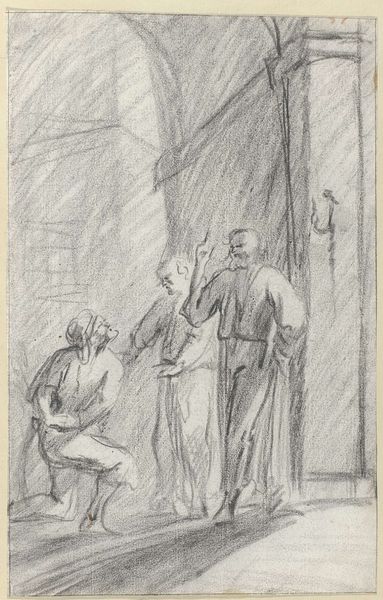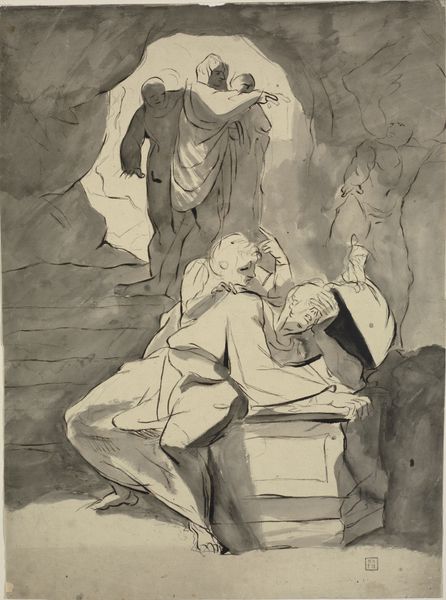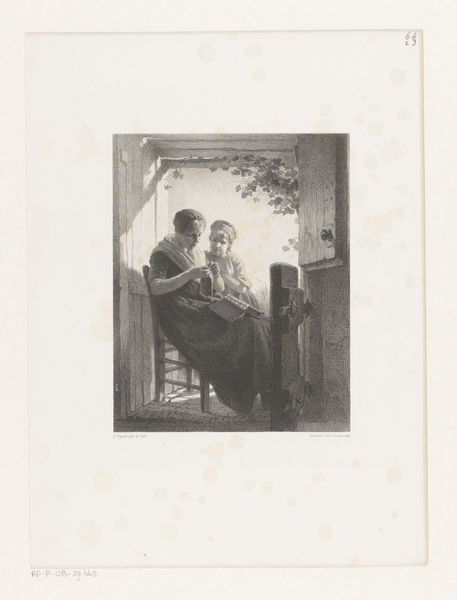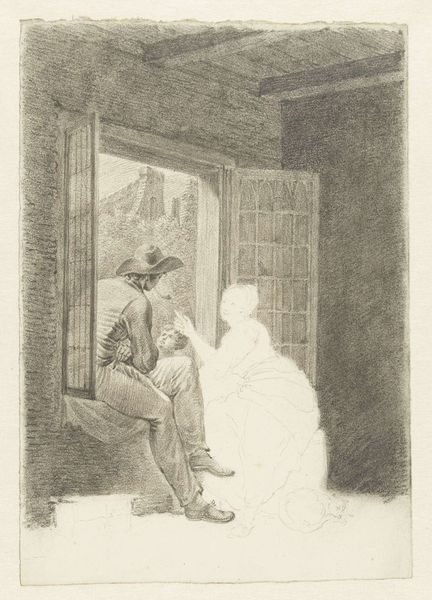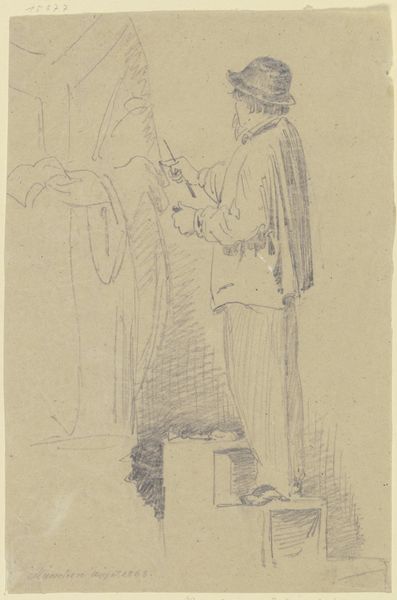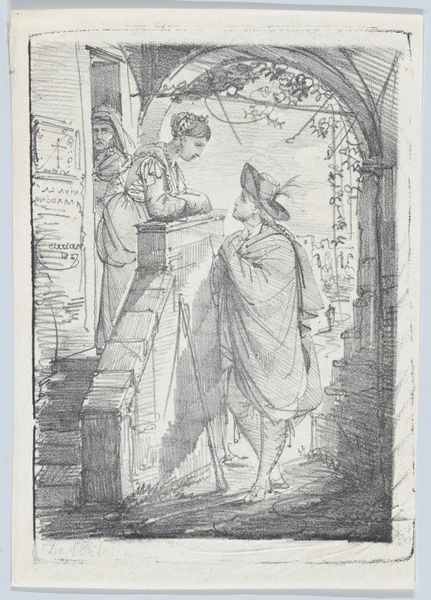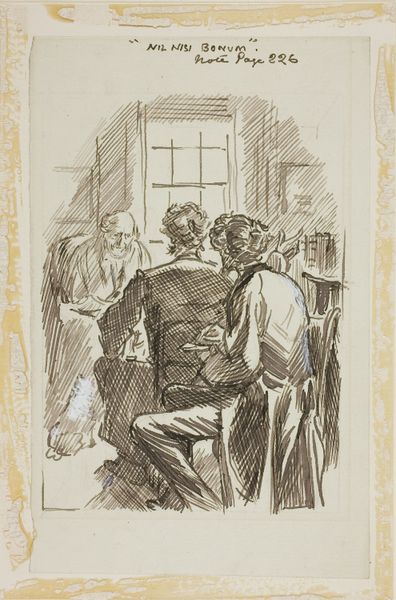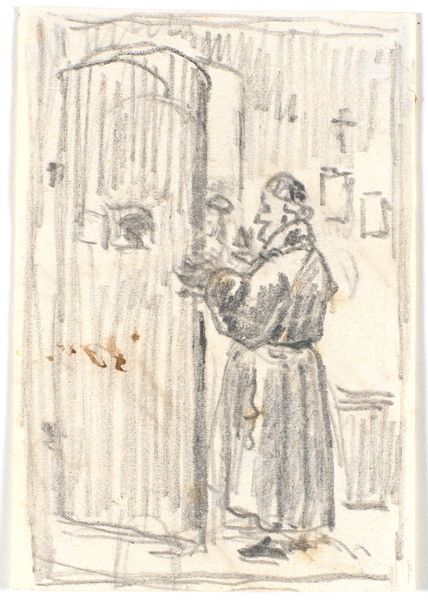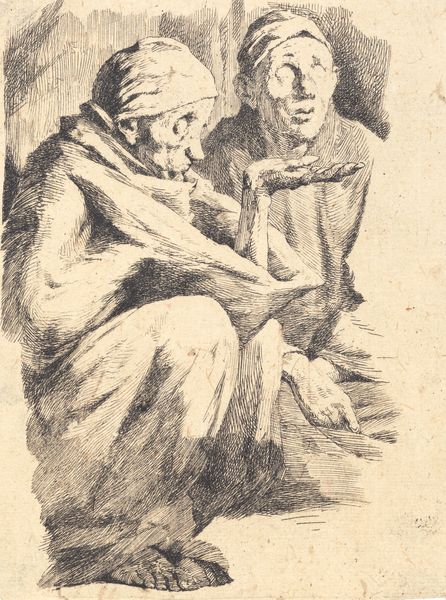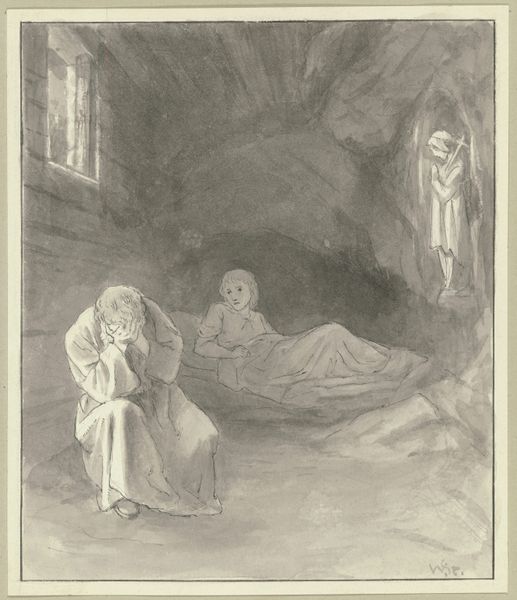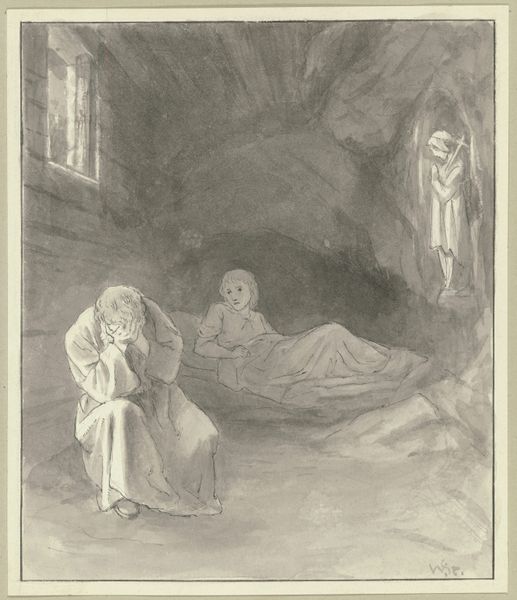
drawing, pencil
#
portrait
#
drawing
#
pencil drawing
#
pencil
#
portrait drawing
#
genre-painting
#
academic-art
Copyright: Public Domain
Curator: Welcome. Here we have a drawing titled "Two Standing Men," attributed to Wilhelm Steinhausen. It appears to be rendered in pencil. Editor: My first impression? Restrained. The monochromatic palette and rather subdued pose of the figures give it a sense of quiet contemplation, maybe even a touch of melancholy. Curator: Precisely. Steinhausen was operating within the sphere of academic art, and drawings such as these were exercises in form and preparation for larger paintings, often genre scenes. These men are possibly meant to depict a particular class identity, too. The seated man seems higher status judging from his ornamented chair and placement relative to the younger man who remains standing with his hat in hand. Editor: I notice how Steinhausen uses light to model the forms, particularly the folds in the seated man's garments. There's a strong contrast in the light falling on the left versus the right, the artist creating depth and a tangible sense of volume, wouldn’t you agree? Curator: Yes, and the artist is deliberately using those contrasts to guide our eyes through the composition. The use of light here reflects trends and social priorities that romanticize everyday life and imbue them with a feeling of significance, almost a reverence for a seemingly ordinary moment in history. These kinds of genre paintings really increased in popularity as more museums were opened and more people had access to viewing art, they began to find comfort in familiar scenes that made them feel important and worth depicting. Editor: It strikes me that there is such clarity of line. Even with something as seemingly basic as pencil, Steinhausen gets variety, subtlety. You can feel the difference in textures, can't you? The smooth, almost reflective surface of the glass in the windows versus the rougher cloth. Curator: The staging feels contrived. There's the obligatory landscape glimpsed through the window and there are elements of the man's costume like his headdress and tunic that read as symbolic staging elements, almost like he's dressing to play a particular role in society, as a member of the upper-class, for instance. Editor: A lovely find, it demonstrates that, even in the humblest of mediums, skillful craftsmanship is clear. I wonder what the intention of the work was to be. Curator: Perhaps it was the pursuit of the idealized images that provided society with a mirror and compass.
Comments
No comments
Be the first to comment and join the conversation on the ultimate creative platform.
